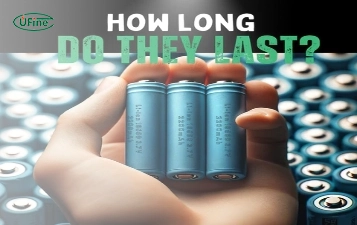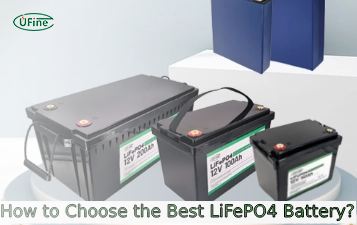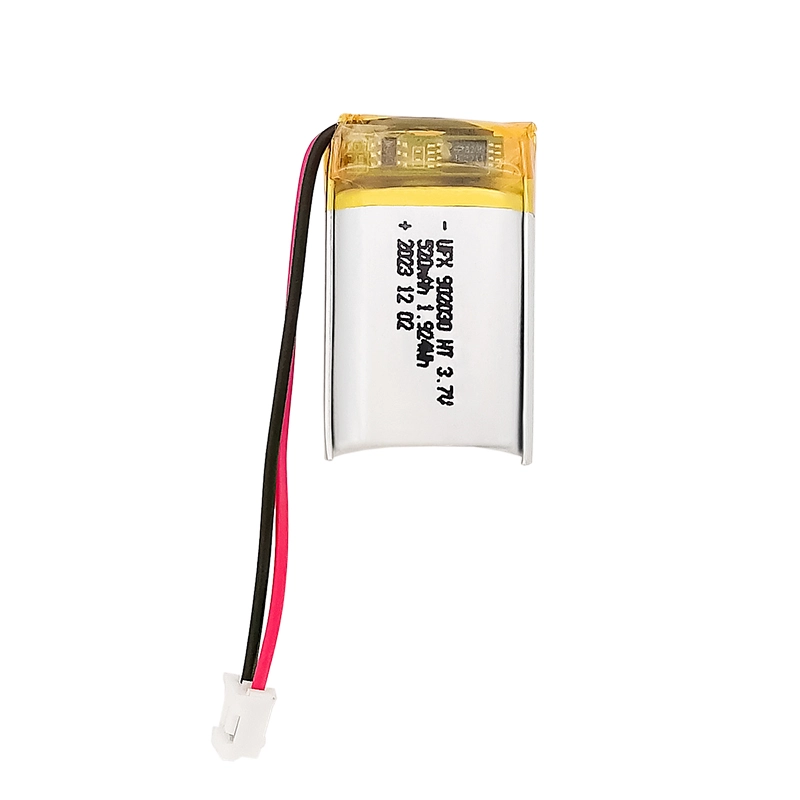
Elevate Your Wearables With Advanced Wearable Device Battery
Not only are wearable devices very constrained in size, but they must also be very light as comfort is important as they are worn for long periods of time. Therefore, the wearable device battery must be as small as possible. Not only that, repeated research conducted by IDC and GMI shows that battery life is the number one consideration for consumers when purchasing battery-powered convenience products. Therefore, a high-capacity wearable device battery is very important to the success of the product.
Meeting these two requirements simultaneously makes the battery challenge even more daunting. Fortunately, lithium batteries have many properties that enable them to overcome this challenge, making them ideal for wearable device applications.
First, they offer high energy density, allowing system design engineers to choose smaller and lighter batteries that can provide longer operating times. Meanwhile, lithium batteries typically operate at 3.7 V, compared to 1.2V for nickel-metal hydride or nickel-cadmium batteries. This means that lithium batteries require fewer cells, which also contributes to smaller and lighter systems.
In addition, the self-discharge rate of wearable device lithium batteries is also much lower than that of nickel-based batteries, which is about 2% per month. And nickel metal hydride and nickel-cadmium batteries are up to 5% per day. Not only does this reduce the number of recharges, but the battery can be used again at any time after being left for a long time, making the system more customer-friendly.
Of course, all technologies have their shortcomings. For example, lithium-ion batteries are more complex to manufacture than nickel-based rechargeable batteries, so they are more expensive. But as a mass-produced product, economies of scale and continued technological improvements are rapidly reducing its manufacturing costs.
In terms of safety, most lithium-ion batteries have internal protection circuits that protect against overvoltage or undervoltage to a certain extent. However, the charging process for lithium-ion batteries is still much more complicated than for nickel-based rechargeable batteries.
Lithium-ion batteries: enabling comfortable and convenient wearable devices
●Small battery, long battery life, high energy density
●Higher operating voltage means fewer cells and smaller systems
●Slower self-discharge: fewer charging times, ready for use at any time
Charging jump of wearable device battery
To avoid these safety issues, lithium-ion batteries require constant current (CC) and constant voltage (CV) charging processes. In this process, the wearable device battery is first charged with a fixed current until it reaches the set voltage. The charging circuit then switches to constant voltage mode, providing the necessary current to maintain the set voltage.
For optimal charging, careful trade-offs must be made in the selection of current and voltage levels. Charging at a higher voltage can increase battery capacity, but voltages that are too high can cause the battery to become stressed or overcharged, causing permanent damage, instability and danger.
Likewise, higher charging current allows for faster charging, but at the cost of reduced battery capacity. A 30% reduction in charging current can increase the amount of charge stored in the battery by as much as 10%.
Therefore, the charging current is usually set to half the battery capacity (the maximum current that the battery can sustain for one hour), and the voltage is set to 4.2 V per cell.
However, it turns out that using a slightly smaller charging current and voltage can slow down the aging of the battery, allowing it to survive more charging cycles with a higher capacity.
Wearable device battery safety
Because of this complexity, charging solutions must be able to closely monitor charging current and voltage. And provide a stable control loop to keep the charging current and voltage at appropriate values at the appropriate point in the charging cycle (that is, the current remains constant in the first stage and the voltage remains constant in the second stage).
Charging solutions also need to be fully tested according to strict standards. These standards contain more extensive testing conditions than those required for nickel-based rechargeable batteries, while also including tests related to the batteries themselves.
wearable device battery charging cycle
The wearable device battery charging process starts as soon as the input voltage is detected. If the battery power is severely depleted (for example, the voltage is lower than 3V), the charging algorithm will trigger a precharge phase to “precharge” the battery with a low current (about 10% of the battery capacity) until the battery can accept full charging current. This prevents overheating.
After the voltage reaches the appropriate level, the charging algorithm switches to the current stage, charging the battery with a higher current (up to the battery’s capacity) until the voltage reaches 4.2 V (standard value). At this time, the charger enters the constant voltage stage to avoid the danger of overcharging. During this stage, the voltage remains at 4.2 V, while the current decreases to around 10% of the battery capacity. The transition from the constant current phase to the constant voltage phase is done gradually and smoothly to avoid battery damage.
By this time the battery is fully charged. If the battery is still connected after being fully charged, the charger enters the voltage monitoring stage to provide periodic recharging to make up for the power consumption due to battery self-discharge. Recharge is usually performed when the battery’s open circuit voltage drops below 4.0 V.
Safe, convenient and reliable wearables
The wearable device market is growing rapidly now and will continue to do so in the coming years. Progress has been made in both system power consumption and energy harvesting potential. But we are still a long way from the goal of wearable devices harvesting energy from their environment to charge. Therefore, wearable devices and other feature-rich IoT applications still require the use of rechargeable batteries.
Lithium-ion batteries are small, lightweight and high-capacity, helping system design engineers meet size constraints while providing long battery life that satisfies consumers. Its higher operating voltage means fewer cells are needed, further reducing system size and increasing design flexibility.
Ufine wearable device battery
Guangdong Ufine New Energy Co., Ltd. is a high-tech enterprise specializing in the research, development, design and production of polymer lithium-ion batteries. Ufine’s wearable device battery provides built-in protection against overvoltage charging, Undervoltage discharge, and overcurrent charge (discharge).
Ufine has been focusing on battery manufacturing technology for 15 years. It is safe and stable, has no risk of explosion, has strong battery life, long-lasting power, high charging conversion rate, does not get hot, has long service life, is durable, has production qualifications and its products have passed many national and global certifications. Certification.
High Energy Density
It stores large amounts of energy in a smaller and lighter package
Longer Cycle Life
Withstands extensive charge and discharge cycles
Low Self-Discharge
Maintains power longer when not in use
Safety
Minimizes the risk of accidents and ensures safe operation
More Information About Wearable Device Battery
-
What is the minimum order quantity (MOQ) for lithium batteries?
-
What is the lead time for lithium battery production and delivery?
-
Can your lithium batteries meet specific country or region certification requirements?
-
How long does it take to make a sample of a custom battery?
Latest Blogs
About Lithium Battery Industry News

Overview of Deep Cycle Lithium Battery
In this article, we explore the life, voltage, capacity, and charging considerations of deep cycle lithium batteries.
2024/04/30 Gerald

How Long do Lithium Batteries Last?
How long do lithium batteries last? we will explore the factors that influence the lifespan of lithium batteries and provide insights into their longevity.
2024/04/30 John

How to Choose the Best LiFePO4 Battery?
Choose LiFePO4 batteries for superior performance, safety, and versatility in EVs, UPS, and backup power. This guide helps you make informed decisions.
2024/04/30 Henry

Get 12v Lithium Car Battery As a Power Source for the Ride
Make the right choice for your vehicle's battery needs by installing a 12 volt lithium car battery. You will enjoy maintenance-free longevity with this change.
2024/04/30 Gerald

Everything About A Small Lithium Ion Battery
Discover the features, uses & future potential of a small lithium ion battery. A compact and tiny powerhouse ideal for smartphones, wearables, drones & more.
2024/04/30 Gerald

Why Should You Choose Lithium Ion Marine Battery?
Upgrade your boat's power with a Lithium ion marine battery, featuring lighter, longer life, faster-charging abilities. Let's choose the best marine battery.
2024/04/30 Gerald



